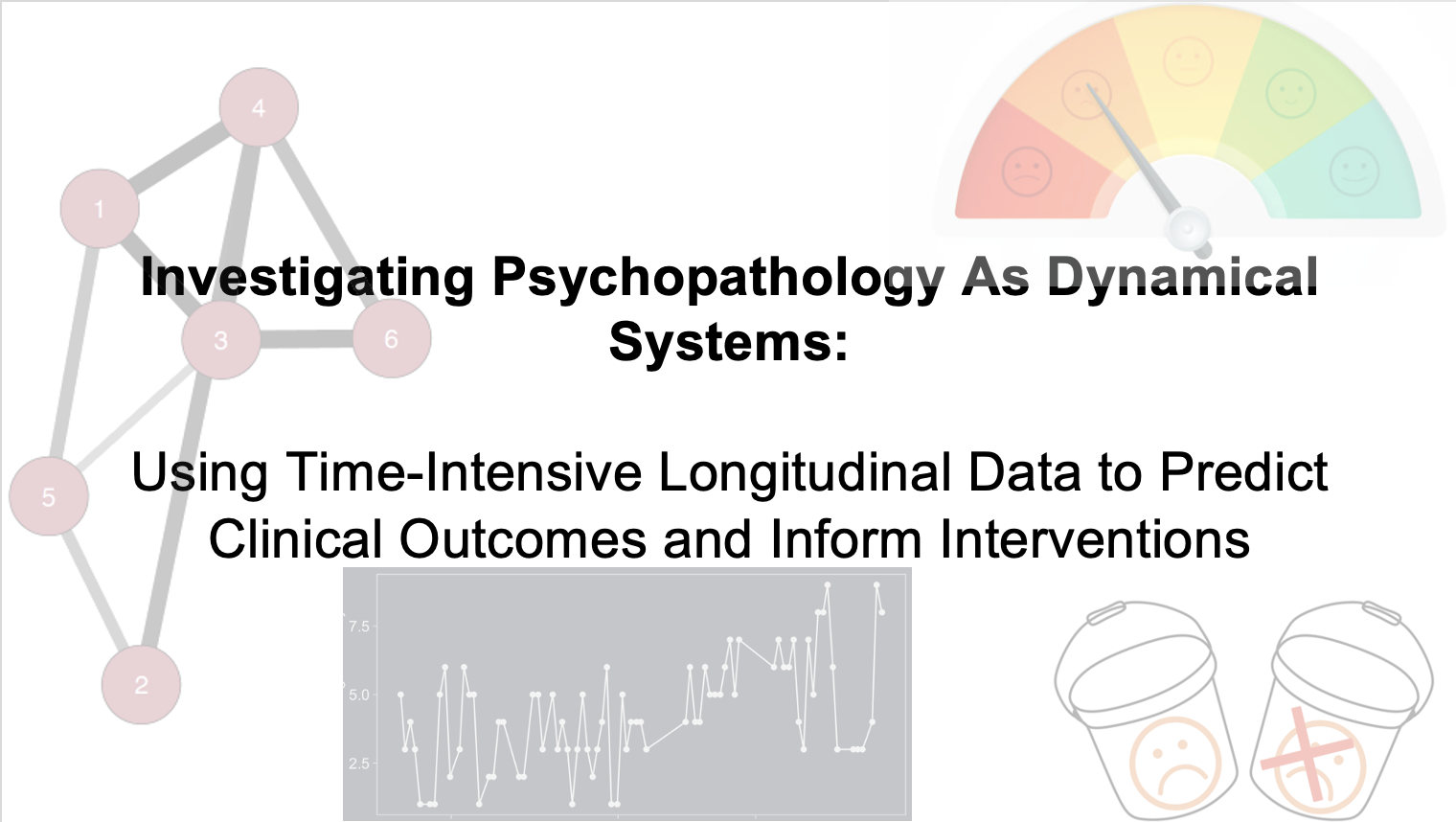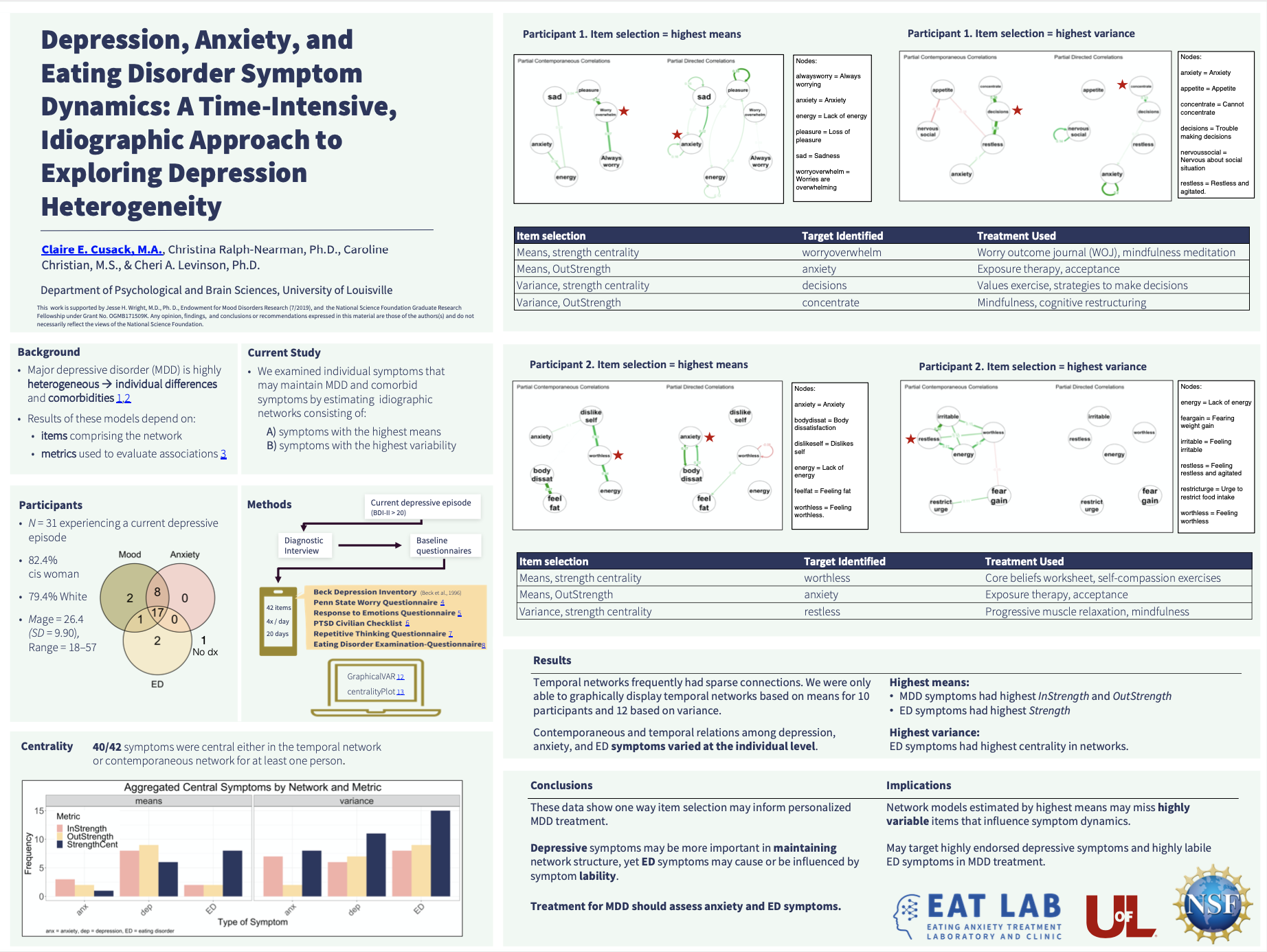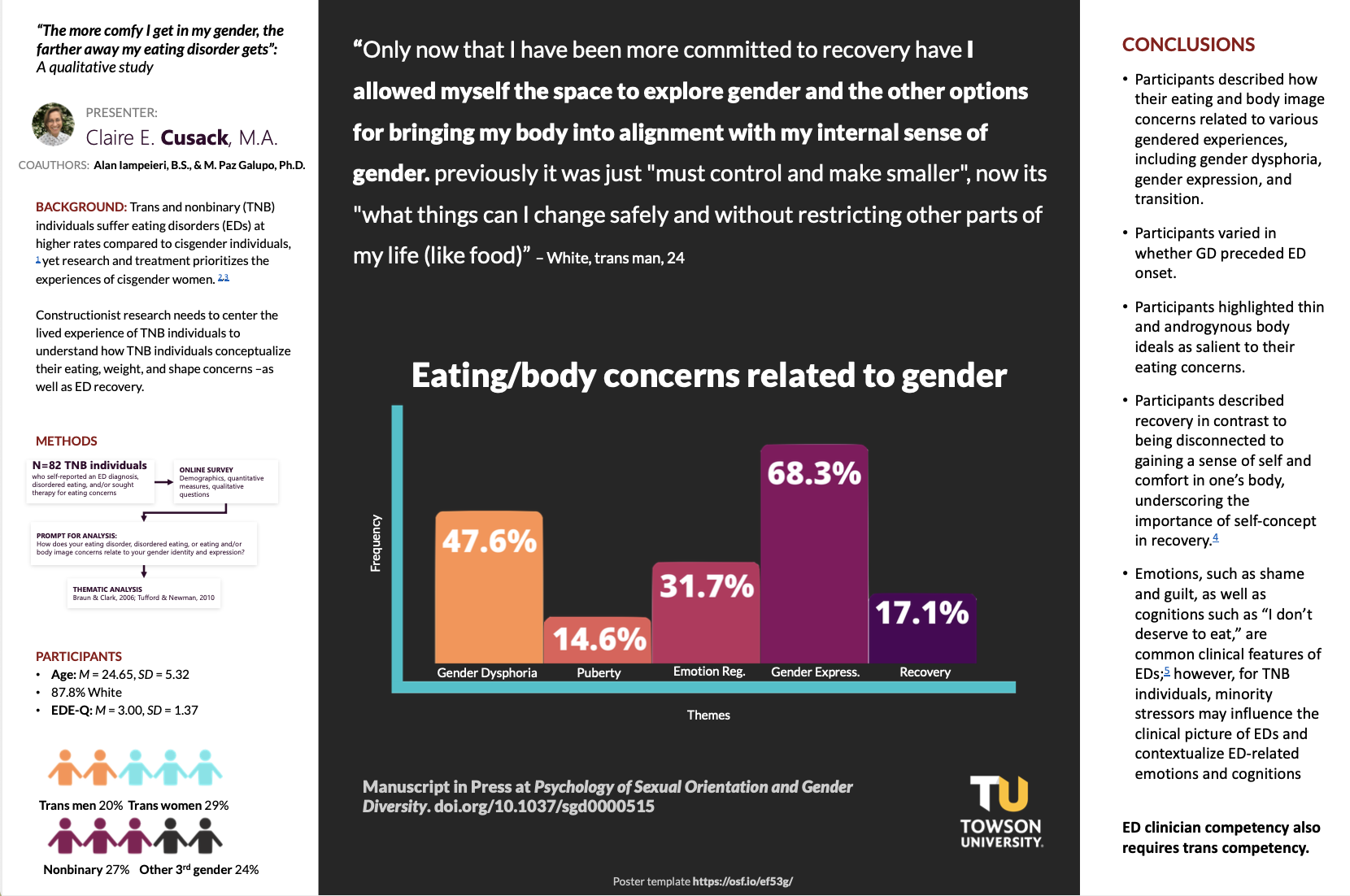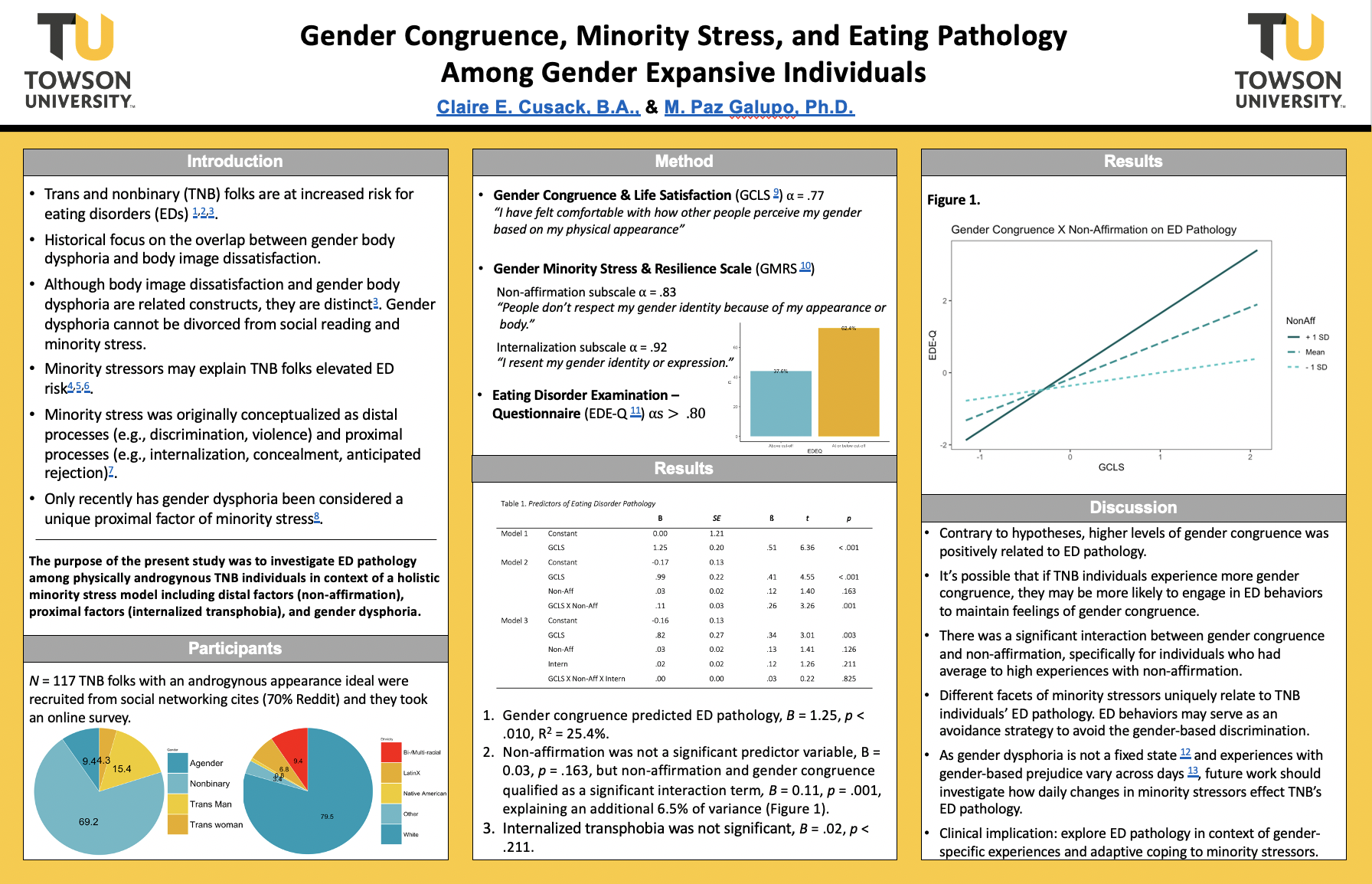My research is centered on understanding illness trajectories (e.g., relapse, recovery, and maintenance) within individuals, with a specific focus on eating disorder and co-occurring psychopathology. We know that eating disorders look different across persons, but we don’t know why or how that impacts treatment. We also know that only half of people who access evidence-based treatment will recover. Thus, my program of research aims to understand the mechanisms that influence eating disorder psychopathology by considering individual variability, time, and context. I think that an idiographic framework, coupled with methods that leverage time-intensive data in naturalistic settings are best equipped to examine how eating disorders unfold in real time in the real world. I hope that this focus will inform personalized treatment to improve clinical outcomes, and ultimately facilitate recovery. I also have a line of research that specifically focuses on ED and body image experiences of queer and trans individuals. Most of my questions can be distilled to:
- Why do eating disorders persist?
- At what timescale do symptoms change?
- How do we make sense of the heterogeneity?
- How can we use this information to improve treatment?

Representative Publications
- Cusack, C. E., Sandoval-Araujo, L., Hernández, J.C., Pennesi, J-L., Lazarus, G., Levinson, C.A., & Fisher, A.J. (2025). What’s strength centrality got to do with it? Examining the stability of central symptoms across symptom ensembles and time in idiographic networks. Journal of Psychopathology and Clinical Science. https://doi.org/10.1037/abn0001005
- Cusack, C. E., Vanzhula, I.A., Sandoval-Araujo, L., Pennesi, J-L., Kelley, S.W., & Levinson, C.A. (2024). Are central eating disorder network symptoms sensitive to item selection and sample? Implications for conceptualization of eating disorder psychopathology from a network perspective. Journal of Psychopathology and Clinical Science. https://doi.org/10.1037/abn0000865
- Cusack, C. E., Vanzhula, I. A., & Levinson, C. A. (2022). The structure of eating disorder and somatic symptoms. Journal of Affective Disorders, 319, 397-406. https://doi.org/10.1016/j.jad.2022.09.106
- Levinson, C. A., Cusack, C. E., Brown, M. L., & Smith, A. R. (2022). A network approach can improve eating disorder conceptualization and treatment. Nature Reviews Psychology, 1-12. https://doi.org/10.1038/s44159-022-00062-y
- Cusack, C. E., Iampieri, A. O., & Galupo, M. P. (In press). “I’m still not sure if the eating disorder is a result of gender dysphoria:” Trans and nonbinary individuals’ descriptions of their eating and body concerns in relation to their gender. Psychology of Sexual Orientation and Gender Diversity.
- Galupo, M. P., Cusack, C. E., & Morris, E. R. (2021). “Having a non-normative body for me is about survival”: Androgynous or non-stereotypical body ideal among trans and nonbinary individuals. Body Image, 39, 68-76. https://doi.org/10.1016/j.bodyim.2021.06.003
- Cusack, C. E., & Galupo, M. P. (2020). Body checking and eating disorder pathology among nonbinary individuals with androgynous appearance ideals. Eating and Weight Disorders - Studies on Anorexia, Bulimia and Obesity. https://doi.org/10.1007/s40519-020-01040-0
- Cusack, C. E., Morris, E. R. & Galupo, M. P. (2020). “A blank slate body:” Cis descriptions of their androgynous body ideals. Psychology & Sexuality. https://doi.org/10.1080/19419899.2020.1837920
- Pulice-Farrow, L., Cusack, C. E., & Galupo, M. P. (2020). Certain parts of my body don’t belong to me: Transindividuals’ descriptions of body-specific gender dysphoria. Sexuality Research and Social Policy, 17, 654–667. https://doi.org/10.1007/s13178-019-00423-y
Presentations
Association for Psychological Sciences Annual Conference, May 2022

Posters
Treatment Selection Idea Lab 2021Two Days of Precision Medicine in Mental Health, September, 2021

American Psychological Association
August 2021

Association for Behavioral and Cognitive Therapies
November 2020

American Psychological Association
August 2020
